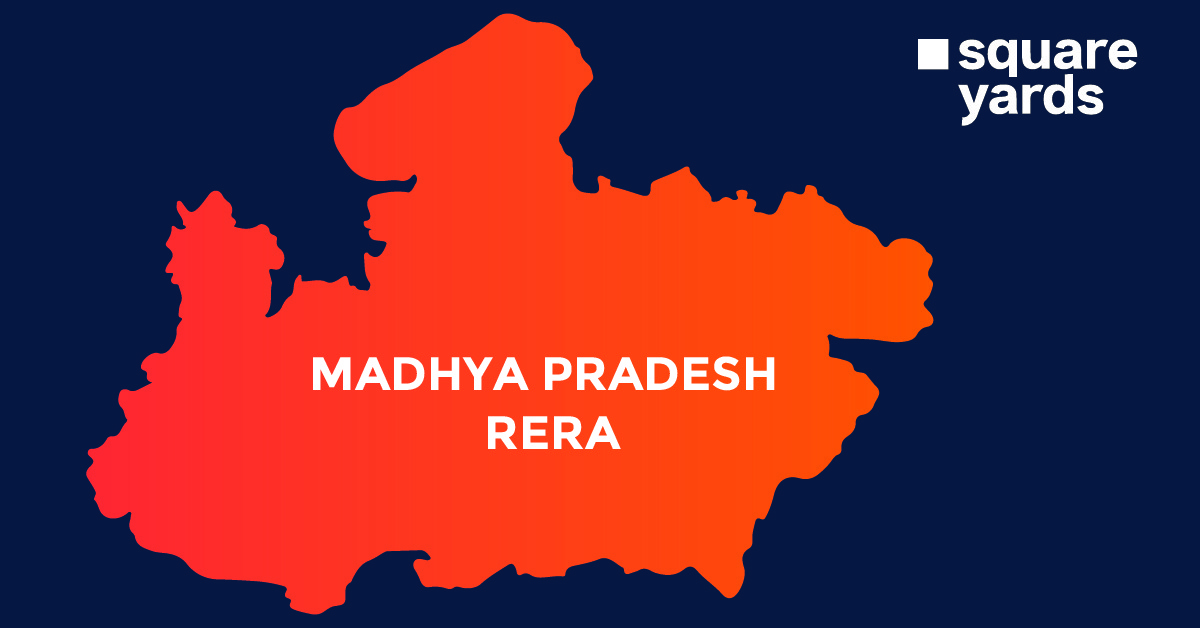Understanding measurement units can be baffling when you are not a maths person. If you are someone who is juggling between units of conversion, then this well-curated guide is for you. If you ever get a chance to access a time machine and travel to the United States in the mid-1840s, you can easily get familiar with metric conversion. Baseball being the favourite game was quite popular at that time. Since the baseball bat is usually a meter long, you can have a crystal-clear image of a meter by contrasting it with a baseball bat. On the other hand, the ruler that is used to draw straight lines depicts centimeters and millimeters.
Moving forward, this section encapsulates everything that you should know to put forward a smooth meter to millimeters conversion. Have a glance!
What is a Meter?
Meter (m) is the base unit for measuring the length and distance. It has been defined clearly in the International System of Units (SI). The meter can be defined as a distance equivalent to the distance covered by the light within 1/299 792 458 of one second.
When related to popular units of length measurement, one meter is equivalent to 1.0936 yards and 39.370 inches. In addition, 1 meter is equal to 1000 millimeters.
Examples of Meter
In general, people use meters in daily life without actually noticing it. Go through the following objects as they are equal to 1 meter in length. It will help you to have a clear idea about how long a meter is:
- A television screen
- The length of a guitar
- Width of a fridge
- Width of a room’s door
- Room window
- Height of a 5 year old
Measurement of a Meter in Different Units
| One Meter to Yard | 1.0936132983 Yard |
| One Meter to Micrometer | 1000000 Micrometers (µm) |
| One Meter to Inches | 39.37 Inches |
| One Meter to Micron | 1000000 Micron (µ) |
| One Meter to Foot | 3.280839895 Foot |
| One Meter to Decimeter | 10 Decimeter (dm) |
| One Meter to Micrometer | 1000000 Micrometer (µm) |
| One Meter to Nanometer | 1000000000 Nanometer (nm) |
| One Meter to Kilometer | 0.001 Kilometer (km) |
What is Millimeter?
Millimeter (mm) is a unit for measuring length within the SI (International System of Units). It has been defined as 1/1000 of a meter or the distance covered by the light within 1/299 792 458 000 of one second. The relationship of the meter and millimeter remains constant, and before this definition came into existence, the meter was based upon the length of prototype meters.
The millimetre is also written as “millimeters” in numerous countries and is termed as a multiple of the meter. In the metric system terms, “milli” is described as the prefix for 10-3. It is abbreviated as “mm”. For instance, you can write one millimeter as 1 mm. On metric rulers, the smallest ticks represent the millimeters. To have a clear idea about this unit, relate it with the US dime’s thickness, which is equal to 1.35 mm.
Examples of Millimetre
Generally, a millimeter is used for the measurement of small objects. You might encounter an array of small objects in an entire day that is equivalent to a millimeter. Following are some of the objects that are around 1 millimeter in length:
- Width of plastic ID card
- The thickness of a bundle comprising of 15 papers
- A sharp point of the pencil
Measurement of a Millimeter in Different Units
| One Millimeter to Kilometer | 1.0E-6 Kilometer (km) |
| One Millimeter to Yard | 0.0010936133 Yard (yd) |
| One Millimeter to Inch | 0.0393700787 Inch |
| One Millimeter to Mile | 6.2137119223733E-7 Mile |
| One Millimeter to Nautical Mile | 5.3995680345572E-7 Nautical Mile |
| One Millimeter to Decimeter | 0.01 Decimeter (dm) |
| One Millimeter to Centimeter | 0.1 Centimeter (cm) |
| One Millimeter to Feet | 0.0032808399 Feet |
| One Millimeter to Meter | 0.001 Meter (m) |
How Many Millimeters are there in a Meter?
To convert meters to millimeters (mtr to mm), the key thing you need to be familiar with is how many millimeters make a meter. 1000 millimeters together make a meter. This value is used to convert mtr to mm regardless of the conversion figure. It won’t matter if you are converting 1 mtr to mm or 1000 mtr to mm, you will have to multiply the figure by 1000 to get the converted value. In a nutshell, 1000 millimeters (mm) makes a meter (m).
Relationship between Meter and Millimeter
Both meter and millimeter units are quite popular when it comes to length measurement. To carry out effective mtr to mm conversion, it becomes essential to get familiar with the relation between the two.
The meter to mm conversion entirely orients around how these units uphold one another. In simple words,
For meters to millimeters conversion, one needs to know the value of millimeters in 1 meter.
- 1 meter is equal to 1000 millimeters, and this value will be the considerable conversion factor to compute meter to millimeter value.
- 1 millimeter is equivalent to 0.001 meter, and this value will be the considerable conversion ratio to compute mm to meter value.
- When we talk about conversion ratio, we mean the value that needs to be multiplied or divided with the value that has to be converted.
- For meters to millimeters, multiply 1000 (conversion ratio) with the meter value to access the converted value.
For instance,
To convert 18 m to mm
Multiply, 1000 by 18
18 meter * 1000 = 18000 millimeters
How to Convert Meters to Millimeters?
The meters to millimeters conversion becomes a seamless affair when you are already familiar with the basics of the conversion. One can either pin his hope on the meter to the mm calculator or can count on the meter to millimeter conversion formula.
To compute values through the meter to mm calculator, you have to enter desirable values in the text area, and you will get the converted value in a fraction of seconds. Sounds easy? Try it through our conversion calculator and be a master of conversion in front of your folks.
Although, if you want to do it manually, then you don’t require lots of expertise to use the conversion formula. Here is what you should know.
Formula to Convert m to mm:
mm = m * 1000
For better understanding, refer to the below-mentioned example:
Convert 13 m to mm
Multiply 13 meter by 1000
Which is equivalent to 13000 millimeters.
Steps to Use the Meter to Millimeter Calculator (meter to mm Calculator)
You have to follow the step-by-step procedure to use the meter to mm calculator:
Step 1: Enter the value of meter within the given text area
Step 2: Click on “Convert” or just press “Enter.”
Step 3: Finally, the converted value of the entered figure will be displayed in the output text area.
The meters to millimeters conversion formula offers quick and easy computation of conversion figures. Shift to the conversion formula when you don’t have access to the meter to mm calculator.
1 meter is equal to 1000 millimeters.
This value is entitled as conversion ratio to compute m to mm conversion.
The formula to convert meter to mm is:
millimeter = meter * 1000
Until now, you must have a clear-cut idea about the relationship between these units together with the conversion formula. Let’s move forward with some examples to understand how to put values in the meters to millimeters formula to carry out conversion with utmost ease.
Examples to Understand Meters to Millimeters Formula
Refer to the below-mentioned examples to understand how the meter to mm formula works:
1. Convert 30 meter to mm
To convert 30 meter to mm, multiply 30 with 1000 (the conversion factor)
30 m to mm = 30 * 1000
30000 millimeters
2. Convert 45 meter to mm
To convert 45 meter to mm, multiply 45 with 1000 (the conversion factor)
45 m to mm = 45 * 1000
45000 millimeters
3. Convert 60 meter to mm
To convert 60 meter to mm, multiply 60 with 1000 (the conversion factor)
60 m to mm = 60 * 1000
60000 millimeters
4. Convert 75 meter to mm
To convert 75 meter to mm, multiply 75 with 1000 (the conversion factor)
75 m to mm = 75 * 1000
75000 millimeters
5. Convert 90 meter to mm
To convert 90 meter to mm, multiply 90 with 1000 (the conversion factor)
90 m to mm = 90 * 1000
90000 millimeters
Meters to Millimeters Conversion Table
To make it easy-breezy for you, we have presented the meters to millimeters conversion chart that enlists the converted value from 1 to 100. Refer to the depicted table to save your time:
| meters[m] | millimeters[mm] | meters to millimeters[mm] |
| 1 m | 1000 mm | 1 meter is equal to 1000 millimeters |
| 2 m | 2000 mm | 2 meters is equal to 2000 millimeters |
| 3 m | 3000 mm | 3 meters is equal to 3000 millimeters |
| 4 m | 4000 mm | 4 meters is equal to 4000 millimeters |
| 5 m | 5000 mm | 5 meters is equal to 5000 millimeters |
| 6 m | 6000 mm | 6 meters is equal to 6000 millimeters |
| 7 m | 7000 mm | 7 meters is equal to 7000 millimeters |
| 8 m | 8000 mm | 8 meters is equal to 8000 millimeters |
| 9 m | 9000 mm | 9 meters is equal to 9000 millimeters |
| 10 m | 10000 mm | 10 meters is equal to 10000 millimeters |
| 11 m | 11000 mm | 11 meters is equal to 11000 millimeters |
| 12 m | 12000 mm | 12 meters is equal to 12000 millimeters |
| 13 m | 13000 mm | 13 meters is equal to 13000 millimeters |
| 14 m | 14000 mm | 14 meters is equal to 14000 millimeters |
| 15 m | 15000 mm | 15 meters is equal to 15000 millimeters |
| 16 m | 16000 mm | 16 meters is equal to 16000 millimeters |
| 17 m | 17000 mm | 17 meters is equal to 17000 millimeters |
| 18 m | 18000 mm | 18 meters is equal to 18000 millimeters |
| 19 m | 19000 mm | 19 meters is equal to 19000 millimeters |
| 20 m | 20000 mm | 20 meters is equal to 20000 millimeters |
| 21 m | 21000 mm | 21 meters is equal to 21000 millimeters |
| 22 m | 22000 mm | 22 meters is equal to 22000 millimeters |
| 23 m | 23000 mm | 23 meters is equal to 23000 millimeters |
| 24 m | 24000 mm | 24 meters is equal to 24000 millimeters |
| 25 m | 25000 mm | 25 meters is equal to 25000 millimeters |
| 26 m | 26000 mm | 26 meters is equal to 26000 millimeters |
| 27 m | 27000 mm | 27 meters is equal to 27000 millimeters |
| 28 m | 28000 mm | 28 meters is equal to 28000 millimeters |
| 29 m | 29000 mm | 29 meters is equal to 29000 millimeters |
| 30 m | 30000 mm | 30 meters is equal to 30000 millimeters |
| 31 m | 31000 mm | 31 meters is equal to 31000 millimeters |
| 32 m | 32000 mm | 32 meters is equal to 32000 millimeters |
| 33 m | 33000 mm | 33 meters is equal to 33000 millimeters |
| 34 m | 34000 mm | 34 meters is equal to 34000 millimeters |
| 35 m | 35000 mm | 35 meters is equal to 35000 millimeters |
| 36 m | 36000 mm | 36 meters is equal to 36000 millimeters |
| 37 m | 37000 mm | 37 meters is equal to 37000 millimeters |
| 38 m | 38000 mm | 38 meters is equal to 38000 millimeters |
| 39 m | 39000 mm | 39 meters is equal to 39000 millimeters |
| 40 m | 40000 mm | 40 meters is equal to 40000 millimeters |
| 41 m | 41000 mm | 41 meters is equal to 41000 millimeters |
| 42 m | 42000 mm | 42 meters is equal to 42000 millimeters |
| 43 m | 43000 mm | 43 meters is equal to 43000 millimeters |
| 44 m | 44000 mm | 44 meters is equal to 44000 millimeters |
| 45 m | 45000 mm | 45 meters is equal to 45000 millimeters |
| 46 m | 46000 mm | 46 meters is equal to 46000 millimeters |
| 47 m | 47000 mm | 47 meters is equal to 47000 millimeters |
| 48 m | 48000 mm | 48 meters is equal to 48000 millimeters |
| 49 m | 49000 mm | 49 meters is equal to 49000 millimeters |
| 50 m | 50000 mm | 50 meters is equal to 50000 millimeters |
| 51 m | 51000 mm | 51 meters is equal to 51000 millimeters |
| 52 m | 52000 mm | 52 meters is equal to 52000 millimeters |
| 53 m | 53000 mm | 53 meters is equal to 53000 millimeters |
| 54 m | 54000 mm | 54 meters is equal to 54000 millimeters |
| 55 m | 55000 mm | 55 meters is equal to 55000 millimeters |
| 56 m | 56000 mm | 56 meters is equal to 56000 millimeters |
| 57 m | 57000 mm | 57 meters is equal to 57000 millimeters |
| 58 m | 58000 mm | 58 meters is equal to 58000 millimeters |
| 59 m | 59000 mm | 59 meters is equal to 59000 millimeters |
| 60 m | 60000 mm | 60 meters is equal to 60000 millimeters |
| 61 m | 61000 mm | 61 meters is equal to 61000 millimeters |
| 62 m | 62000 mm | 62 meters is equal to 62000 millimeters |
| 63 m | 63000 mm | 63 meters is equal to 63000 millimeters |
| 64 m | 64000 mm | 64 meters is equal to 64000 millimeters |
| 65 m | 65000 mm | 65 meters is equal to 65000 millimeters |
| 66 m | 66000 mm | 66 meters is equal to 66000 millimeters |
| 67 m | 67000 mm | 67 meters is equal to 67000 millimeters |
| 68 m | 68000 mm | 68 meters is equal to 68000 millimeters |
| 69 m | 69000 mm | 69 meters is equal to 69000 millimeters |
| 70 m | 70000 mm | 70 meters is equal to 70000 millimeters |
| 71 m | 71000 mm | 71 meters is equal to 71000 millimeters |
| 72 m | 72000 mm | 72 meters is equal to 72000 millimeters |
| 73 m | 73000 mm | 73 meters is equal to 73000 millimeters |
| 74 m | 74000 mm | 74 meters is equal to 74000 millimeters |
| 75 m | 75000 mm | 75 meters is equal to 75000 millimeters |
| 76 m | 76000 mm | 76 meters is equal to 76000 millimeters |
| 77 m | 77000 mm | 77 meters is equal to 77000 millimeters |
| 78 m | 78000 mm | 78 meters is equal to 78000 millimeters |
| 79 m | 79000 mm | 79 meters is equal to 79000 millimeters |
| 80 m | 80000 mm | 80 meters is equal to 80000 millimeters |
| 81 m | 81000 mm | 81 meters is equal to 81000 millimeters |
| 82 m | 82000 mm | 82 meters is equal to 82000 millimeters |
| 83 m | 83000 mm | 83 meters is equal to 83000 millimeters |
| 84 m | 84000 mm | 84 meters is equal to 84000 millimeters |
| 85 m | 85000 mm | 85 meters is equal to 85000 millimeters |
| 86 m | 86000 mm | 86 meters is equal to 86000 millimeters |
| 87 m | 87000 mm | 87 meters is equal to 87000 millimeters |
| 88 m | 88000 mm | 88 meters is equal to 88000 millimeters |
| 89 m | 89000 mm | 89 meters is equal to 89000 millimeters |
| 90 m | 90000 mm | 90 meters is equal to 90000 millimeters |
| 91 m | 91000 mm | 91 meters is equal to 91000 millimeters |
| 92 m | 92000 mm | 92 meters is equal to 92000 millimeters |
| 93 m | 93000 mm | 93 meters is equal to 93000 millimeters |
| 94 m | 94000 mm | 94 meters is equal to 94000 millimeters |
| 95 m | 95000 mm | 95 meters is equal to 95000 millimeters |
| 96 m | 96000 mm | 96 meters is equal to 96000 millimeters |
| 97 m | 97000 mm | 97 meters is equal to 97000 millimeters |
| 98 m | 98000 mm | 98 meters is equal to 98000 millimeters |
| 99 m | 99000 mm | 99 meters is equal to 99000 millimeters |
| 100 m | 100000 mm | 100 meters is equal to 100000 millimeters |
Difference Between Meter and Millimeter
Now when you understand how meter and millimeter are related to one another, let’s move forward with their difference. Both measurement units differ from one another in specific parameters. One such thing is that a millimeter is smaller than a meter. There is a lot more to this list. Refer to the depicted table to unlock more parameters that make them different from one another.
| Basis of Comparison | millimeters | meters |
| Symbol | mm | m |
| Definition | A millimeter (mm) is a length measurement unit that is widely used within the aegis of the SI or International System of Units | Meter is one of the most popularly used units across the world. It is an SI unit for the measurement of the length. In Physics, it is defined as the path traversed by the light in a vacuum within a set time interval of 1/299,792,458 seconds |
| Formula | 1 mm = 0.001 m | 1 m = 1000 mm |
| Size | A millimeter is a thousand times smaller than a centimeter | One meter is a thousand times bigger than a millimeter |
| Origin | The millimeter is derived from the French ‘millimeter’ and is a combination of two words ‘milli’ and ‘meter’. It is one-thousandth part of a meter | The word meter is derived from the Greek word metron, meaning “a measure” |
| Applicability | Used as a prefix to the SI base unit of length – meter | It is the SI unit of length. |
| Use | The unit is mainly used to measure objects of smaller diameters. | It is used worldwide for the measurement of length. Moreover, the unit is also used to measure the distances in races like swimming, running, etc. |
Current Use of Meters
Meter is considered as a standard metric unit and is predominantly used for measurement purposes. Usually, it is used for measuring distances in race and real estate domains. The racetracks category is determined in terms of the 100-meter race and 200-meter race. Apart from this, it is considered for the measurement purpose of fencing and house width.
Current Use of Millimeters
Millimeters are used whenever smaller denominators are needed. They are basically metric units deployed for measuring the length of various objects and other items, and they are popularly used throughout the globe.
Wrapping Up
After referring to the aforementioned information, we can say that the meter to millimeter conversion becomes a cakewalk when you know how to use a conversion calculator and mtr to mm conversion formula. Just input the values in the conversion formula, i.e., millimeter = meter * 1000 and that’s it. Voila, you will be done. If you want to convert values in a fraction of seconds, then count on our easy-peasy conversion calculator. There is a lot more to explore in conversion, as both meter and millimeter can be converted into numerous other units too. Refer to our other conversion guides to become a pro at conversion.
Frequently Asked Questions (FAQs)
How to calculate meters to millimeters?
To calculate meters to millimeters, multiply the meter value by 1000.
What is the formula for converting meters to millimeters?
Formula for converting meters to millimeters is
millimeter = 1000 * meter
How many millimeters are there in 1 meter?
There are 1000 millimeters in 1 meter.
How many meters are there in 1 millimeter?
There is 0.001 meter in 1 millimeter.
What are meters and millimeters used for?
Meters are used for measuring height, distance, length and width. Additionally, they are also used for precise measurements, including guitar string measurements and even for cutting hair.
































